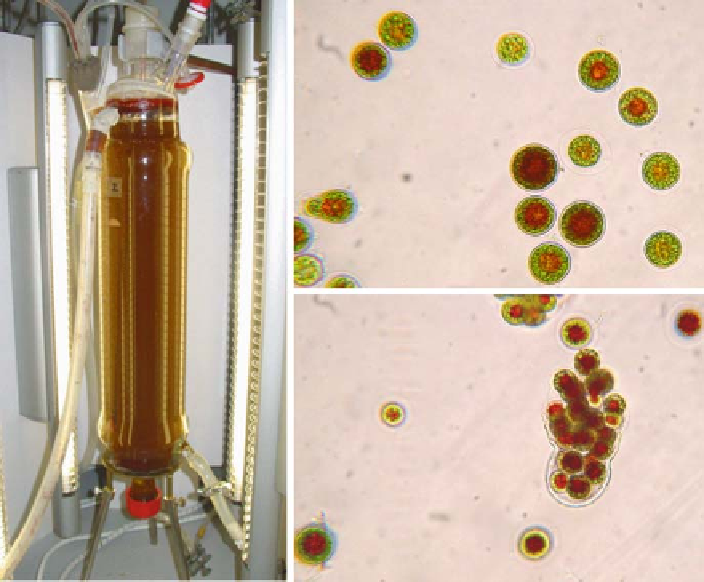Environmental Engineering Reference
In-Depth Information
b
a
c
Fig. 4
Photochemostat operating under optimal conditions in the one-step mode for astaxanthin
production (
a
), and microscopic view of the reddish
Haematococcus
population contained (
b
,
c
)
exhibiting superior productivity, the quality of the generated product also repre-
sents a plus. More than 95% of the cells composing the population generated in the
one-step system are of the reddish vegetative type, either flagellated or palmelloid
(Fig. 4), with only a small fraction of hard-walled aplanospores being present. Red
aplanospore, on the other hand, is the morphotype of the accumulation stage in the
two-step system.
Molecular composition of the reddish cells found in the one step system reflects a
situation of moderate nitrate limitation, with a decreased protein content that, how-
ever, is higher than in cysts. Higher carbohydrate and lipid content is also found in
reddish cells in comparison to the green stage (Table 2). Astaxanthin accumulation
in
H. pluvialis
takes place in lipid vesicles in the cytoplasm, and a close relationship
exists between fatty acid synthesis and astaxanthin accumulation [50].
Despite claimed advantages of the aplanospores as source of astaxanthin with
regard to pigment content, storage stability and mechanical resistance [30, 51], the
presence of the hard cell wall may hamper digestibility [27], reducing the direct
applicability of cysts in aquaculture and animal nutrition. Therefore, alternatives
are being sought to facilitate transfer of the pigment from
H. pluvialis
cells to the
trophic chain. In this context, we have performed a study of the relative fragility of

Search WWH ::

Custom Search